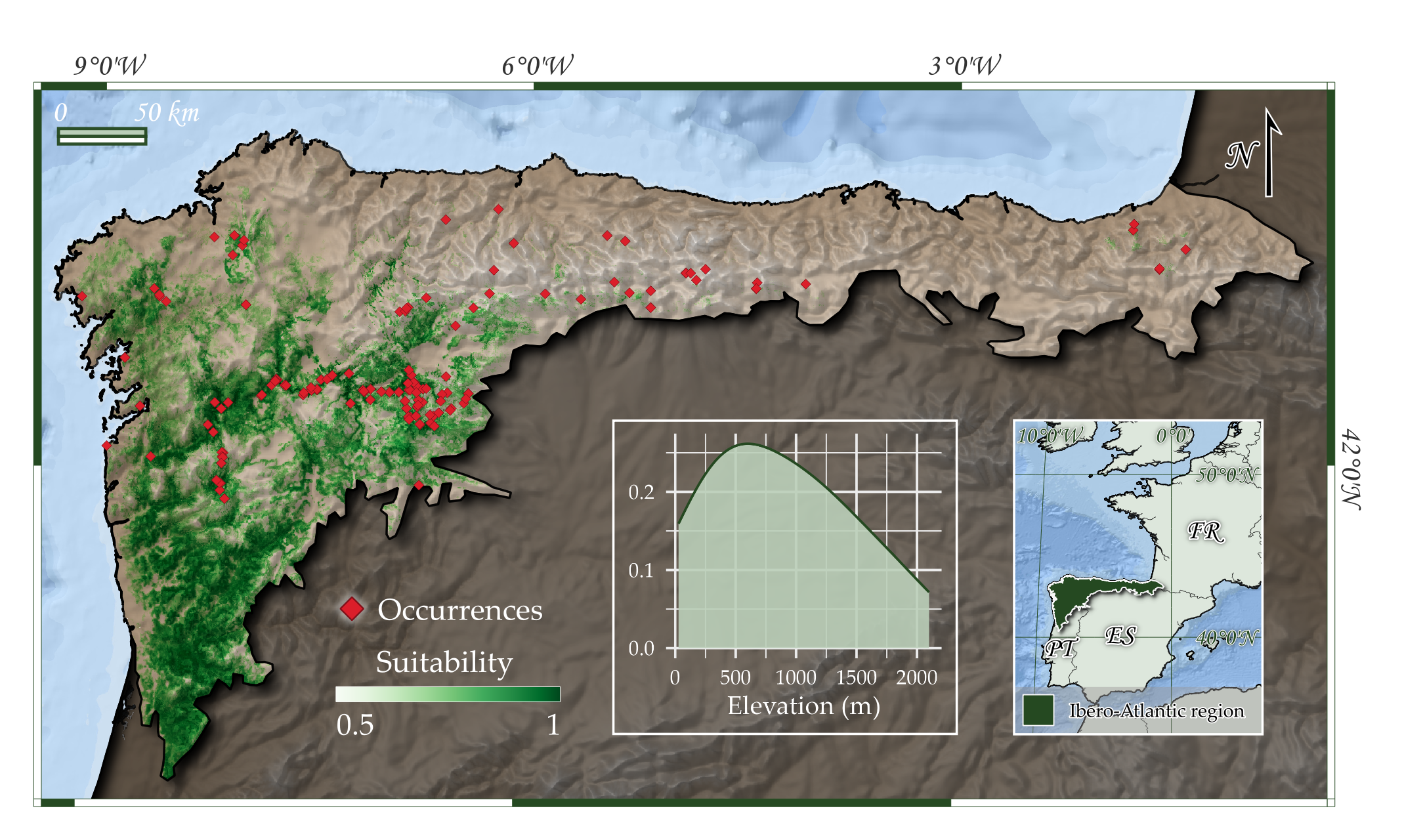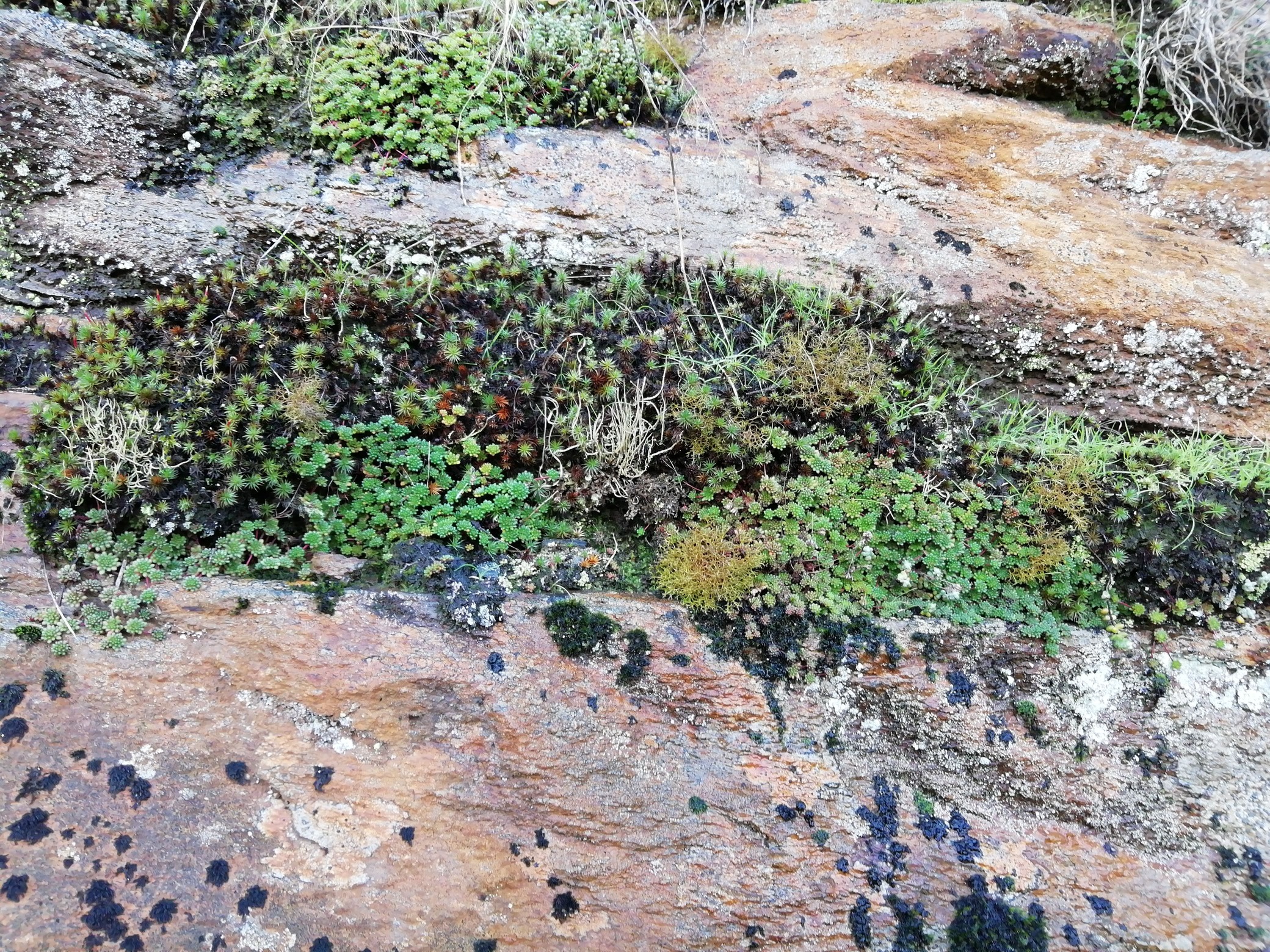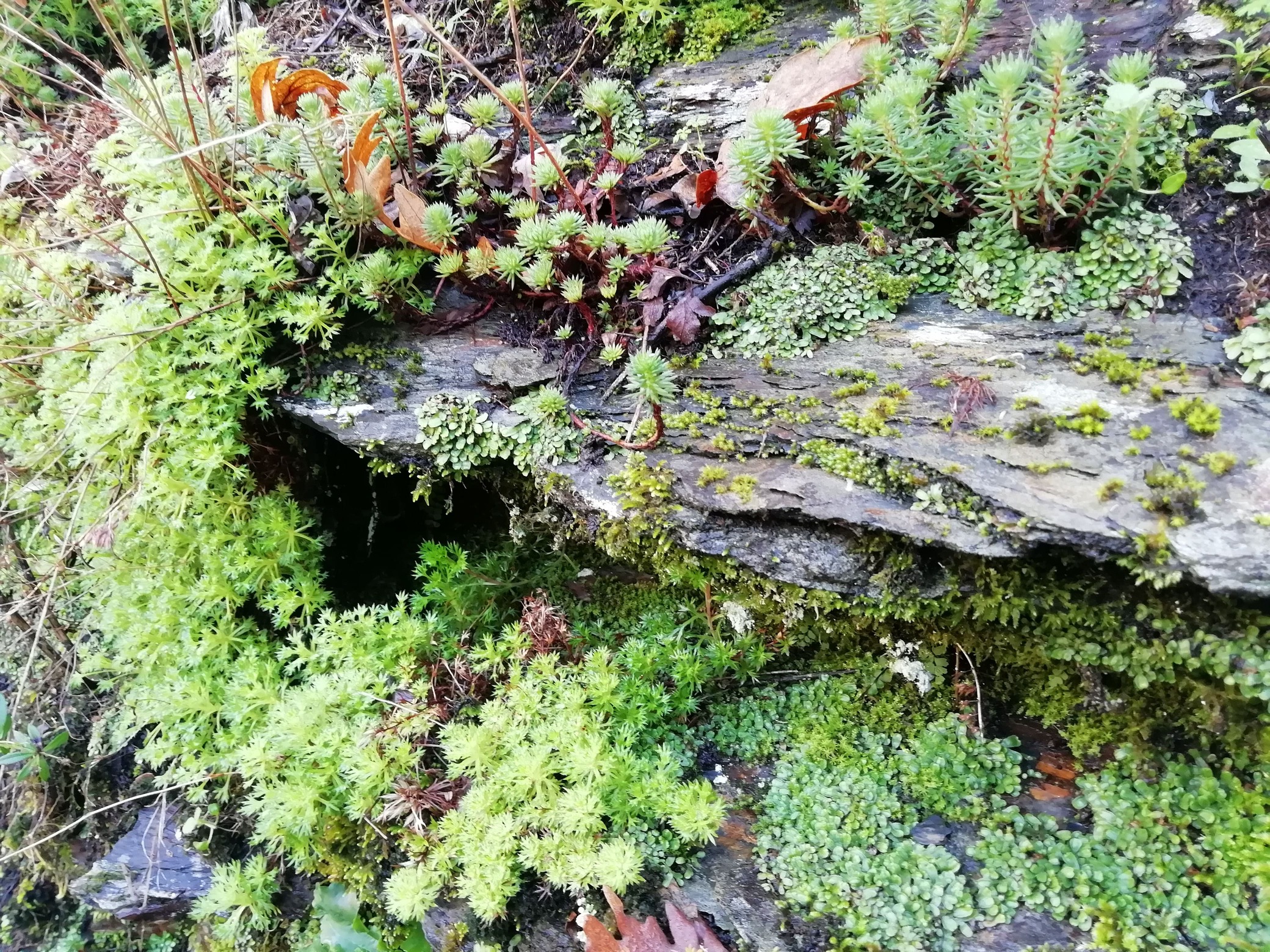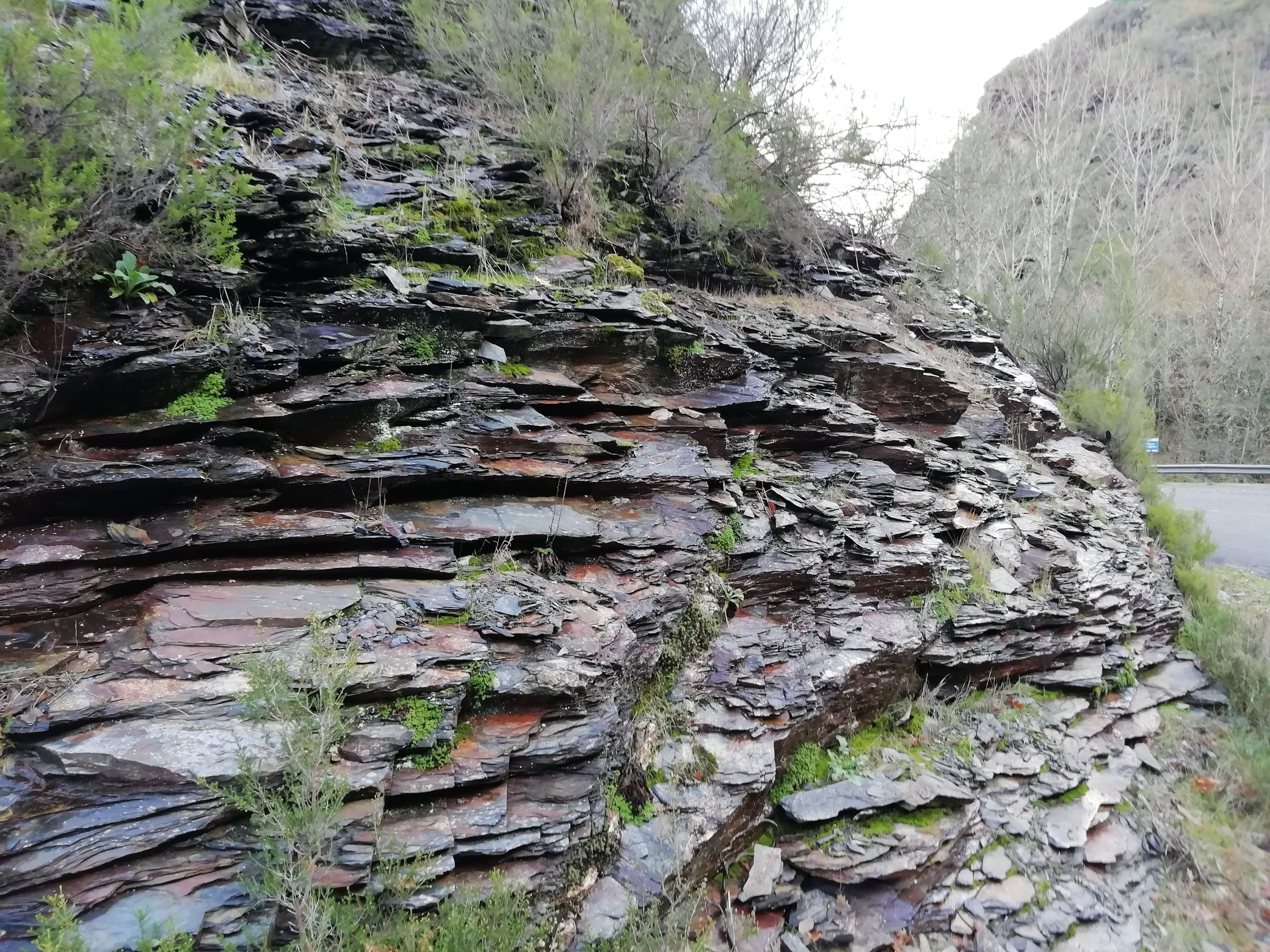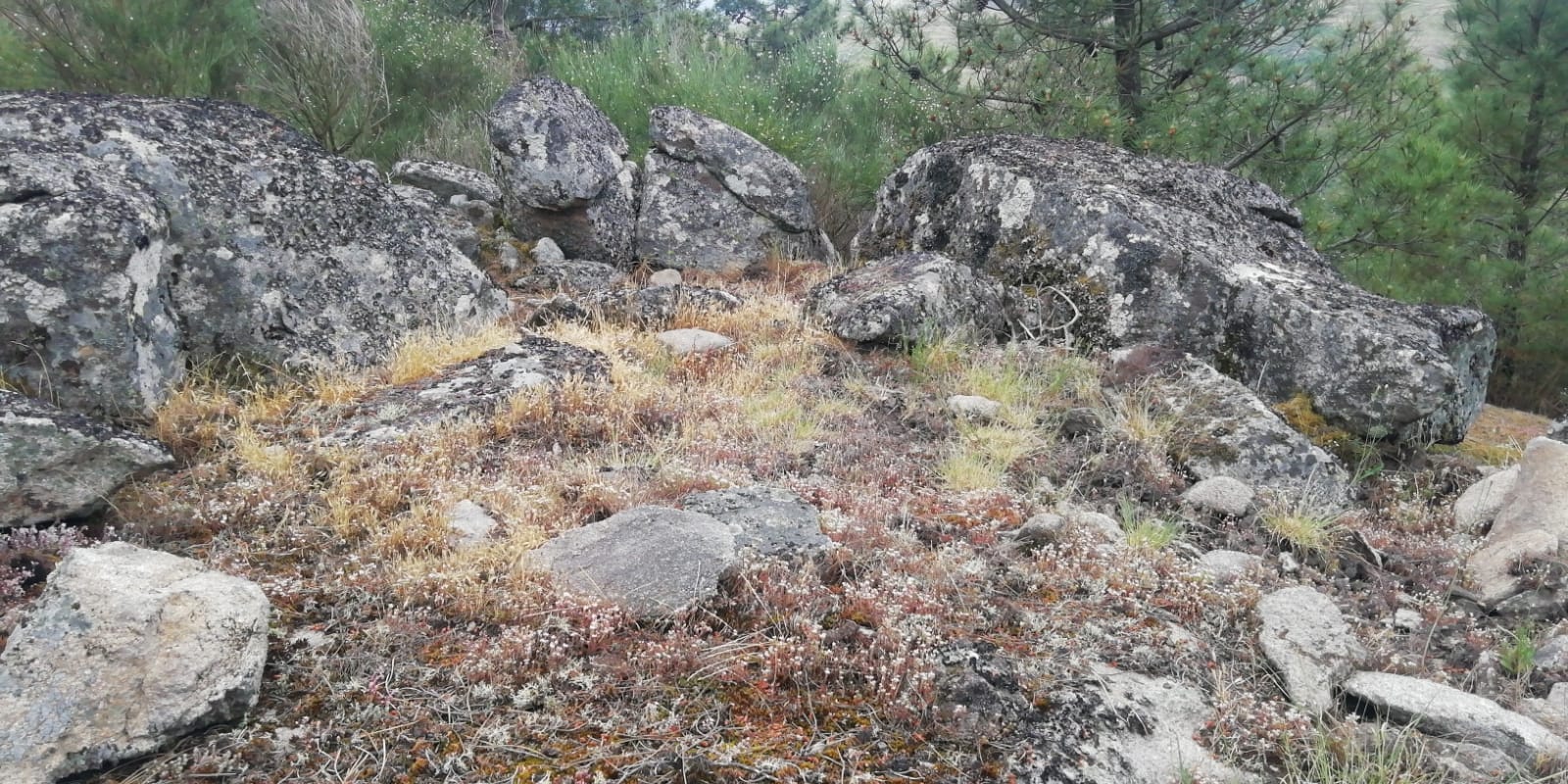U34x Iberoatlantic siliceous cliffs
Description
Rupicolous vegetation analogous to that in U381, but on siliceous outcrops which, on top of the direct chemical and nutritional difference with limestones, are less soluble and produce a lesser amount of suitable crevices, these communities being therefore less diverse. Since most of the associated species (including a few endemics, as often in this island-like biotopes, clustered along recent orogens) grow on ledges retaining locally originated regolith, an alternative typification of some of these formations might make use of the EUNIS unit R122 (“Sparsely vegetated weathered rock and outcrop habitats), but they intermix with truly rupicolous communities at very small spatial scales (apparently smaller than those typically used in the rélévés that constitute our primary data source), the distinction thus becoming inoperative for most purposes. A regional umbrella unit is created in order to join together at level IV the thermophilous, submediterranean, lowland communities of U345 (“Western Iberian siliceous cliffs) and the orophilous ones of unit U3411 (“Ibero-Carpetanian siliceous cliffs), whose floristic delimitation, for the existence of a many transitions, is too weak to recognise two units at that level.
Floristic Composition
Frequent species
Indicator species
Regional distribution
